DC motors are used in a wide range of applications, from small home appliances to industrial automation. One such major division is the Permanent Magnet DC (PMDC) motors, which are efficient, easy to operate, and reliable. But how myopic is such an eye, and whether or not this attribute applies in every case, are there many cases to support the application of such electric motors? This piece aims to uncover the fundamentals of PMDC motors, their functioning, and the numerous benefits they provide, while also emphasizing the sectors that are leveraging these motors to help them succeed in the market. For instance, if you are an engineer, a technophile, or someone eager to understand how devices function, then here is the guideline that best describes your power and the application that underpins everything about the use of Permanent Magnet Direct-Current batteries.
Introduction to a DC Motor
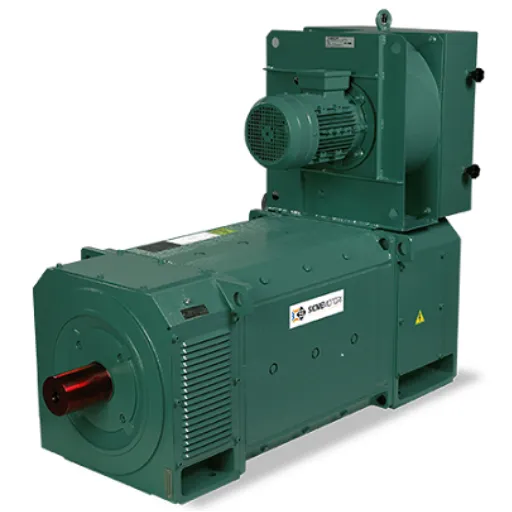
DC engines, also known as Direct Current engines, are devices designed to convert electrical power from a direct current source into mechanical energy. These are based on the electromagnetic induction principle, where a conductor carrying current and placed inside a magnetic field experiences a force. The principal details of these engines are: a rotor, which is a part that rotates, a stator, which is a stationary part, brushes, and a commutator. Most of these engines have been highly regarded for providing controlled speed and torque; hence, they are applied within mechanisms of different scales, from domestic apparatus to those of factory standards.
What is a DC Motor?
The electric energy supplied to a DC motor is converted into mechanical energy by the motor due to the interaction of the magnetic fields generated during operation. Whenever an electrical current passes through the winding within the rotor part of the motor, a magnetic field is generated around the winding. That magnetic field interacts with the stationary internal magnets (permanent magnets, stators, the standard design), causing the rotor to turn. The commutator and the brushes in a DC motor make it their duty to ensure that the electric current in one rotor winding at a time is consistently reversed, to continue the rotation of the motor. Over time, advances in DC motor technology have further enhanced the electric motors in terms of their performance and robustness, further expanding their application areas in the field of robotics, hybrid electric cars, and even those that are powered entirely by solar or other renewable power sources.
Components of a DC Motor
| Component | Description |
|---|---|
| Stator | Produces a stationary magnetic field for the rotor. |
| Rotor | Rotates to generate mechanical energy output. |
| Commutator | Reverses current direction in the windings periodically. |
| Brushes | Transfers current from the power source to the rotor. |
| Armature Windings | Conducts current, generating a magnetic field for rotation. |
| Field Windings | Creates the magnetic field in electromagnet-based DC motors. |
| Bearings | Reduces friction and supports smooth rotor rotation. |
| Housing | Protects internal components from damage and environmental factors. |
Types of DC Motors
| Type of DC Motor | Key Points |
|---|---|
| Shunt DC Motor | Field winding parallel to armature. |
| Series DC Motor | Field winding in series with armature. |
| Compound DC Motor | Combines series and shunt windings. |
| Permanent Magnet DC Motor | Uses strong permanent magnets for the field. |
| Separately Excited DC Motor | Field winding connected to an external source. |
| Brushless DC Motor | Uses electronic commutation, no physical brushes. |
| Stepper Motor | Precise step-like rotation. |
Permanent Magnet DC Motors
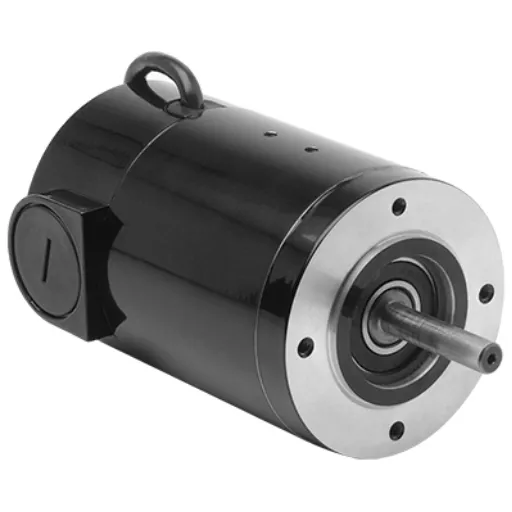
The generation of magnetic flux necessary for the operation of Permanent Magnet Direct-Current (PMDC) Motors is accomplished through the use of magnetic poles, which are always available, thus removing the need for field windings. Such engines are recognized for their compact design, high efficiency, and stable operational characteristics. These engines are prevalent in electric vehicles, robotics, and the second half of the household electronics field, owing to their design and resource consumption benefits. Additionally, the maintenance requirements for these motors are reduced due to the minimal use of brushes on most of them, and very few systems have external fields, which makes them preferred for use in both the industrial and consumer sectors, where they are equally distributed.
How Permanent Magnet DC Motors Work
TMDC motors, also known by another common name, PM motors, operate on the principles of electromagnetism. In this case, a stator with permanent magnets and a rotor containing wound coils form the PM motor. The windings on the rotor create a rotational magnetic field whenever the rotor is excited. This field interacts with the fixed field of the permanent magnets to produce pulling forces or torque, causing the rotor to rotate.
To prevent a decrease in the efficiency of the PMDC motors, an activator switch and brushes are needed to induce the reversal of the rotor windings that carry the current at various times. This method guarantees that the magnetic poles of the rotor are continually pushed against the stator’s permanent magnets and are pulled towards them. This feature has enabled the use of stronger and more durable permanent magnets in the motor, thereby increasing the motor’s efficacy as well as the torque that is produced by the motor. These improvements have also enabled the PMDC motors to operate effectively in very demanding instances, such as portable, lightweight devices, including contemporary precision robotics systems and alternative energy reservoir mechanisms, among many other applications.
Advantages of Permanent Magnet DC Motors
High Efficiency
The efficiency of PMDC motors is primarily attributed to the absence of electrical losses typically found in the windings of the rotor. As long as there are permanent magnets with unchanging magnetic fields, these motors will be able to convert a significant amount of excess electric power into mechanical torque. In these cases, most motors are typically designed with minimal losses, resulting in efficiency levels exceeding 85%.
Compact and Lightweight Design
As brick-and-mortar manufacturing continues to evolve in terms of DC machines, efficiency improvements on these machines have been registered. As more is learnt and developed, the reasons for these improvements on PMDC machines are limited in scope.
High Torque-to-Weight Ratio
Compared to other types, PMDC motors offer several benefits, including a high torque-to-weight ratio. For example, small PMDC motors used in robotics can produce a torque of up to 10 Nm and weigh less than 2 kg, making them ideal for tasks that require precision and minimal space.
Low Maintenance Requirements
There are fewer components, such as brushes, in a PMDC motor, and as a result of its simpler design, compared to discontinuous motors. The other motor types, PMDC motors, require minimal maintenance.
Broad Application Versatility
These electric machines are widely used in various sectors, including consumer electronics, the automotive industry, and, most significantly, in renewable energy systems. To illustrate usage in areas where wind turbines operate, PMDC electric machines are the prevailing type because they can accommodate wide speed variations with the applied power and still provide a long, stable lifespan.
Improved Thermal Performance
The reason for the use of the permanent magnets was that they allow running considerably cooler, as the field is no longer required to run cold, as it does when it is wound. As a result, the service life of the engine is extended, and its efficiency is maintained over a longer period of operational load.
Common Applications of Permanent Magnet DC Motors
Automotive Industry
For all motorized devices, such as vehicles, PMDC motors are used in various applications, including convenient devices like windshield wipers, power windows, and blower fans. These tasks require a lot of strength, but PMDC engines contain enough weight and volume, which helps out in the work being done without straining any wire or driving any screw, even in very cramped spaces.
Household Appliances
For all motorized instruments, such as automatic washing machines, vacuum cleaners, food mixers, and others, they all involve the use of PMDC motors. The motors are also inexpensive and require basic maintenance.
Robotics
Serious applications, such as robotics, where these systems are used, require the reliability and precision of control that PMDC motors offer. This is made possible by utilizing the PMDC motors in their rotor, the linear translational motors, the linear actuator, and the servo actuators, which serve as means of actuation or operation for robotic appendages.
Healthcare Equipment
These applications are also suitable for wound motors or air-gap motors, and essential components are used in places where high strength is necessary for wound motors that utilize PMDC motors, which generate low heat. These are used in hydraulic motors, injection systems, and blowers.
Electric Vehicles (EVs)
An electric vehicle consists of various systems, from power steering to the propulsion system, and the utilization of all of these is managed by a PMDC motor. The possibility of using them effectively across various levels of speed (torque) and loads is the primary reason for the overall increase in energy efficiency in EVs.
Aerospace Applications
Most of today’s aerospace systems also use surface, airbrake, and flight control systems, and the performance of these machines is facilitated by PMDC motor technology. These engines are capable of operating in extreme conditions and are remarkably easy to maintain without compromising performance.
Applications of DC Motors in Various Industries
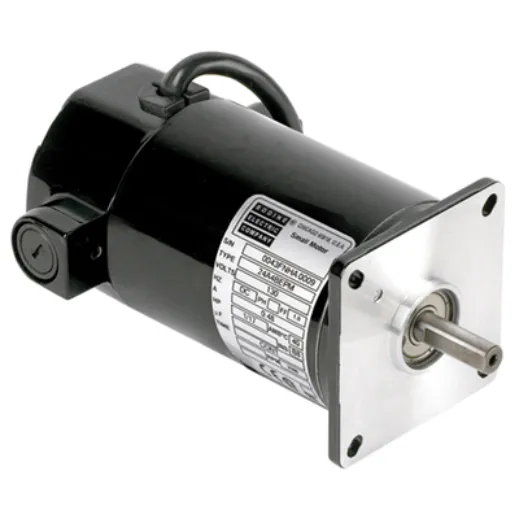
Manufacturing and Automation
One of the key contributions of DC motors in the manufacturing sector includes driving linkages of machines, such as couplings, manipulators, and mechanical joints, as well as in the infeed and outfeed of parts. Their role in such applications is significant, given their ability to accurately control and maintain speeds in machines.
Transportation
Over the past few years, as the demand for alternative means of transportation has soared, the most advanced electric motors have been extensively adopted in the car industry. The novel technology in these motors enhances their ability to deliver maximum power with minimal losses. This helps conserve the vehicle’s battery, as the overall driving experience is greatly improved.
Healthcare Equipment
DC motors power a wide array of medical devices, including drug delivery systems, orthopaedic devices, imaging systems, and many others. The ability to maintain their operating parameters while being reliable and at the same time offer a compact design has immensely helped both the development and the use of life-saving technologies, and hence people.
Home Appliances
Though most people may not realize it, DC motors are one of the most critical elements that allow us to operate various gadgets such as fans, blenders, and washing machines effectively.
Renewable Energy Systems
Whenever people require energy systems that involve movement and precision, such as those in hybrid renewable energy systems, engineers utilize solar panel tracking systems and even wind turbines equipped with DC motors to enhance the power efficiency of these systems.
Automation and Robotics
DC motors effectively operate in extensive power systems automation and robotics, and are one of the pathbreaking technologies vital in providing the highest degree of accuracy in motion systems. The DC motor finds advantages in automation challenges, such as those encountered in robots, handling systems like conveyors, and automated guided vehicles (AGVs), due to its ability to precisely modulate the motor’s torque and speed. The continuous changes and growth in robotics have expanded the domain of DC motor applications, particularly in areas where specific requirements exist. As a result, they are usually inexpensive compared to the quality they offer. Robots, for instance, are often skinny, circular, and occasionally large, massive machinery that vie for the same motors.
Manufacturing and Heavy-Duty Equipment
Electric direct current machines are critical components in heavy-duty machines, such as manufacturing equipment, as well as in equipments that requires high precision, durability, and reliability. They are widely used in cranes, hoists, and on industrial drilling rigs, for they are robust and capable of handling high torques at high speeds. They help operate the conveyor systems widely used in the manufacturing industry, and in some aspects, they are utilized in assembly lines to support factory operations. With the advancement of motor technology today, an increase in efficiency and a decrease in energy consumption in DC motors have also made them environmentally friendly, as well as the most economical units for use in industries. They can be used in factory automation and will continue to ward off competitiveness in powering various stages of intricate manufacturing processes in the future.
Automotive Applications
DC electric machines are torsionally rigid automotive equipment capable of controlling and providing accuracy in various fields of use, including those with specific stereotypes and properties. In developing e-mobility, they find application mostly in electric passenger cars, where the motor drives the primary systems quietly and in a cleaner environment. In addition, DC electric motors are used in smaller elements inside vehicles, like the power window, windshield wiper, seat, and cooling fan. In later cases, the focus shifted to increasing efficiency and reducing the dimensions of axial flux motors to free up more space and save energy for automobile producers. This is the objective of such designs, which have indeed led to improvements in energy efficiency, sustainability, and transportation, consistent with climate change mitigation measures.
Features and Functions of DC Motors
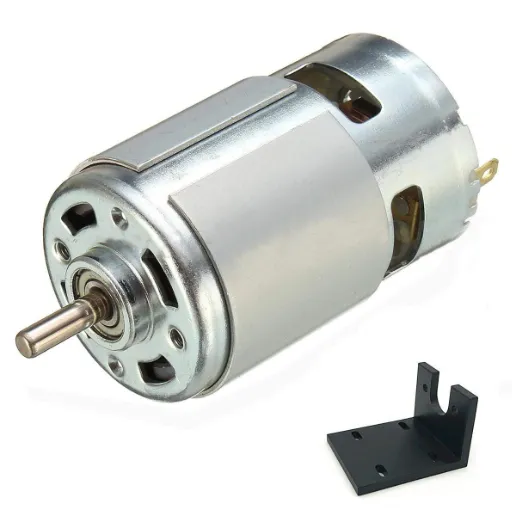
Regarding the first question, the following points are essential to consider in the context of the above analysis.
- Speed Control: It is common knowledge that one of the advantages of DC motors is their high controllability, allowing for wide speed adjustments.
- Compact Design: Consequently, the small dimensions of these motors make them ideal for specific locations where space is limited, such as those used in motor vehicles or most domestic appliances.
- High Starting Torque: Since these engines develop a significant amount of torque almost immediately after power is switched on, they are ideal for situations where short-term mechanical power is required.
- Simple Operation: It is for this reason that DC motors are always preferred over any other kind in such settings because they are very easy to operate and repair, and they cut on operating costs.
Major appliances using DC motors primarily include ventilation devices, such as fans and vacuum pumps, as well as various types of service engineering equipment for different purposes, particularly at industrial manufacturing sites and other similar facilities.
Speed Control Mechanisms
There are several ways to adjust the speed of rotation of a DC motor. This has made the motor versatile and suitable for various applications. Common methods include:
- Voltage Variation: There is an inverse proportionality between voltage and speed. If the voltage is decreased, the motor’s speed decreases, and if the voltage is increased, the speed also increases.
- Field Flux Control: Just like voltage, changing the field leads also affects the motor speed in that a decrease in the flux reduces the speed of the motor, while an increase in the flux reduces the speed of the motor.
- Pulse-Width Modulation (PWM): PWM is a novel innovation in this genre that enables control of the average power supplied to the motor through electrical pulses. This is a highly efficient process commonly applied in the fields of electronics and robotics.
These are some of the effective methods used in controlling various speeds and will yield the best output in industrial, commercial, and domestic environments, even today. DC motors, in particular, prove effective in responding to changes in operational conditions of modern systems due to the incorporation of traditional and automated control measures.
Torque Characteristics
An engineer plays a crucial role in the design of a DC motor’s reading program, as it determines how efficiently the motor can operate. Changes in the direction of the electromotive force (emf) in a magnetic torque electric motor and expansion of the poles in the linear current stator of a torque linear electric motor, among other variables, all contribute to obtaining this reading. The stator magnetic field surrounding a stator often penetrates the air gap through an iron magnetic field, resulting in mechanical torque. Magneto-dynamic torque or the electromagnetic field distribution, windage, and other electrodynamic effects that the latter effect of the magnetic torque cannot fully explain. The amount of torque a typical cantilever beam will generate can be determined from the deflection angle obtained after examination, provided the material characteristics are known. Application of this formula, along with that of the bending moment and the everyday stresses, will initially report the maximum and equilibrium bending stresses on the affected column. In some cases, the operating forces present in the column will exceed the maximum column bending stresses. Such cases can be calculated using the moment distribution method for a given structure.
Efficiency and Performance Metrics
In the understanding and improvement of DC engines, effectiveness and efficiency indicators play key roles. The efficiency percentage quantifies motor performance, which includes the ratio between torque and current, as well as thermal resistance, among other factors. With an efficiency of more than 90%, this trend helps reduce the energy wasted and the operational costs of many high-performance DC motors. Moreover, improved torque and power efficiencies result from better materials and electromagnetic design, leading to more concentric yet powerful motor packages. Attention to aspects such as power consumption, speed response, and the heating effect provides the means to adjust motor behavior, thereby improving service life and reliability even in challenging applications.
Maintenance Practices for Long-Lasting DC Motors
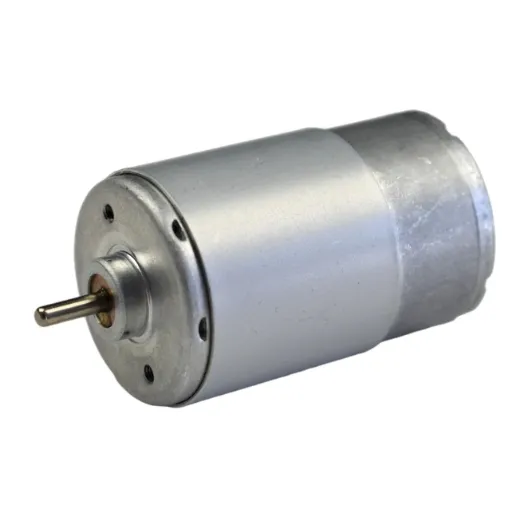
Regular Inspection
Checks the wear and tear of structural elements, such as the commutator, brushes, and bearings, within a specific timeframe. This will prevent the deterioration of these components at an early stage, rather than allowing it to occur.
Cleaning
To maintain optimal motor operations, it is essential to keep the motor clean. Therefore, make it a habit to regularly remove dirt, mud, silt, hydrocarbons, and other pollutants from the motor.
Lubrication
There is always a user and maintenance manual available for any motor or auto machinery, it is essential that bearing fittings on motors operate now and how to use the motor properly, do not lubricate the bearings without doing any research or in any way other than the recommended one.
Brush Replacement
Keep an eye on the motor brushes’ condition and swap them out as necessary to prevent cryptic discharges or disconnections.
Temperature Monitoring
Although all the information indicates that the motor temperatures are acceptable, it’s better to verify this before the insulation deteriorates due to a breakdown, which would limit the system’s efficiency.
Tightening Connections
Regular checks and remedial actions should be taken to verify the tightness and quality of contacts for circuit shutdown and against vibrations in all electrical and mechanical sites.
Regular Inspection and Testing
It is necessary to inspect and assess the condition of electrical motors for their long-term and reliable operation. Repairing and corrective tasks can be performed at an early stage before wear, misalignment, or any other disorder causes a disturbance in the machine. The advanced testing methods apply not only the yearly checks but also other check-ups, which are done in case of need, computer technology: thermography, vibration analysis, have thoroughly exposed the problems that would have been hidden even if the clothes are visible. For example, tests such as the insulation resistance test are beneficial for evaluating the state of motor windings that may break down suddenly. To alleviate such concerns, it is advisable that these maintenance techniques and tools not only prevent any machines from failing but also help in managing them effortlessly, thereby reducing the rate of costs and consequently the associated downtime. Moreover, it is essential to follow appropriate management guidelines to ensure the operational efficiency of electrical motors, particularly in terms of safety features and their effective utilization.
Lubrication and Cooling Systems
You should never ignore the importance of properly lubricating or cooling any electrical motor. Lubrication reduces resistance between machine parts, thereby serving as a wear-reduction system and a method for preventing failure. In most cases, to ensure proper functioning, carefully selected oils or greases must be added at regular intervals to maintain optimal performance. Most manufacturers will provide you with immunity from all liabilities by offering clear guidelines on the exact types of region-specific lubricant in the required quantities, etc. There is a high probability that this regimen will be exceeded or not met, which can result in the machine performing poorly due to either excessive or insufficient lubrication.
Thermal management techniques are essential in cooling electric motors, as the heat has to travel from the motor to the outside. The amount of heat can reach high levels, exceeding the level of heat that the electrical insulation can withstand, thereby causing insulation breakdown as a result. Air cooling and liquid cooling are among the well-known cooling techniques applied. There are also liquid cooling solutions that are more often employed in warming pieces in advanced or high-demand applications because the rate of heat dissipation is instantaneous. Some of the good practices of motor cooling include: Forcing air along the available paths, checking the operation of the cooling fans, and keeping the cooling parts clean. The earlier the cooling system and lubrication are applied, the better, as it reduces the risk of poor performance and maintains the motor in proper working order even under harsh conditions.
Troubleshooting Common Issues
Overheating
One cause of overheating may be insufficient cooling or excessive load. It is essential to check whether there is any blockage in the ventilation systems, mainly where cooling fans are used. This ensures that the cooling fans in the system are powered on and checks whether the system does not become too hot. It also verifies that the motor is not overworked by reviewing the load in the drive and the rated capacity of the motor.
Unusual Noises
Suppose there are unfamiliar sounds or noises, such as knocking, sticking, or heating, during the motor’s rotation/operation. In that case, it signals that the motor has developed bearing problems, belt tension issues, or that its components are already failing. Perform regular visual inspections to confirm proper lubrication on friction surfaces and replace worn bearings. Ensure that the shaft of the motor aligns with other parts according to the respective mounting drawings. Additionally, verify that the shaft is correctly aligned with other components.
Vibration Issues
More than usual vibration could be a result of imbalances, misalignments, and slack fixing of the equipment. There should be no movement of the motor when it is on its bedplate, and this calls for the balancing of the motor. Include checking other devices, such as pulleys or couplings, and verify the motor’s alignment and condition.
Loss of Efficiency
A decrease in work performance efficiency could emanate from electrical-related concerns, such as poor insulation or windings carrying some breakage. The solution will require the use of a multimeter to check electrical resistance and inspect worn-out wires more closely. If any problems are found, correct them so that work can be executed in the best possible manner.
Frequent Tripping of Circuit Breakers
If circuit breakers trip after being reset, it may be due to faults such as short circuits, phase overloading, or faulty protection. All cable fittings should be analyzed, changes made to balance the loads, and components causing the ejection should be changed.
Reference Sources
-
DC Motor Speed Control Using Various Technology Controllers: Review
- Summary: This review explores different technologies used for controlling the speed of DC motors. It highlights the widespread use of DC motors in industrial applications due to their efficiency and adaptability.
-
A Status Review of Different Industrial Drives
- Summary: This study reviews the status of industrial drives, with a focus on DC motors. It discusses the simplicity and flexibility of DC motor control, which makes them suitable for variable industrial applications.
Frequently Asked Questions (FAQs)
Q: What features distinguish NEMA frame DC motors?
A: NEMA (National Electrical Manufacturers Association) frame DC motors are known for having a set of dimensions that are the same as the standardized specifications. This makes it easy for these motors to be used in different machines. Additionally, the NEMA standards ensure that the distribution of machinery and operating equipment falls within the scope of available compatible motor sizes and enclosures. This is particularly important in industries that heavily rely on components and assemblies as quick solutions or upgrades. In addition, most NEMA frame DC motors feature behavioral functions such as speed variation and known constant torque characteristics, making them suitable for use in various sectors.
Q: How do brushed DC motors function in industrial applications?
A: DC motors are defined by the commutation system, in which they induce the use of brushes that retain an electric connection between the turning armature and the power source. Such designs make these motors ideal for many industries because they employ an elegant and efficient operating principle. These types of motors are popular because they are easy to maintain, and, without a doubt, such a feature is a plus point in any factory setup. They run at specific Revolutions per Minute and are capable of giving the same amount of torque constantly as the speed changes, and are also designed. When reliability and working power are taken into account, in transport facilities, precision robotics, and various equipment, brushed DC motors are a must.
Q: What specifications should I consider when selecting frame DC motors?
A: Choosing the frame of a DC motor comes with several key performance considerations that must be taken into account. Among the most critical considerations are the power rating, speed range, and torque characteristics of the motor in question. All factors being constant, the overall design of the motor, in terms of dimensions and frame size, must conform to NEMA standards. The type of enclosure in which the motor is placed also plays a significant role in increasing the motor’s ability to withstand environmental constraints. The features of the motor may include such things as working with removable parts, which facilitates maintenance work, and the ease with which the system will accelerate. Knowledge of these specifications will guide you in selecting the most suitable motor detailed above according to your problems.
Q: What advantages do specialty DC motors offer?
A: Some applications might be better served using a DC motor rather than a standard one. For these reasons, some motors tend to perform better and offer a wide range of advanced features, such as output power higher than that of traditional motors, as well as lower inertia. That means such motors are purpose-built and offer performance characteristics such as slender coaxial dimensions, material usage ratios, and design systems that can be modified in various ways according to system needs. Such applications, commonly used in other advanced technology areas like aerospace or medicine, can utilize DC motors for focusing and static purposes, in other words, without requiring special attention to control them, beyond the use of these types of motors.
